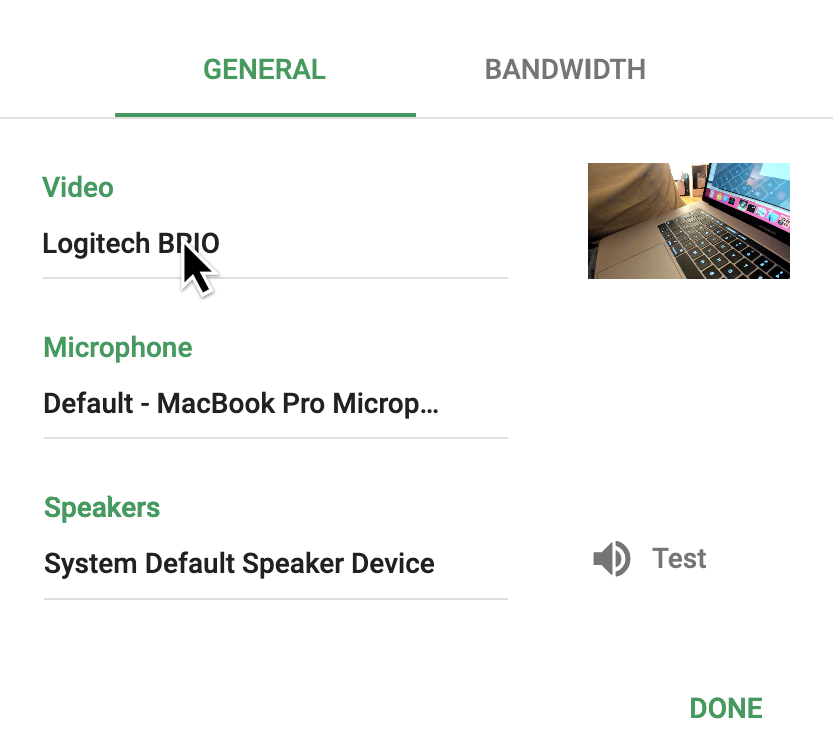-
Notifications
You must be signed in to change notification settings - Fork 62
New issue
Have a question about this project? Sign up for a free GitHub account to open an issue and contact its maintainers and the community.
By clicking “Sign up for GitHub”, you agree to our terms of service and privacy statement. We’ll occasionally send you account related emails.
Already on GitHub? Sign in to your account
Prompt user to choose unless constraints reduce to 1. #644
Conversation
|
If this does what the title says, I'm against it. Prompting the user to choose when the user has a stored permission to access all the devices in the list will lead to completely pointless prompting - more user annoyance, and no added security benefit. The platform should pick the best device in this case. If there is a single device with permission and 1 or more devices with no permission, I could see an argument for prompting the user to choose. Chrome currently uses the model of "either you have permission to all cameras or none". I don't want to make the spec attempt to outlaw that model. |
|
The removing of the "open track" provision seems like a drive-by edit in this context. stream = getUserMedia({video: {device-id: device-id-of-old-track}}) seemed silly to disallow (no added security benefit) when the page could already do stream = old-stream.clone() and in some cases the gUM flow was more natural. |
Please see this slide which I unfortunately ran out of time to present properly last week.
Not so, unless you assume sites don't use constraints? The whole premise of in-content device selection rests on sites responsibly using constraints to remember choices for their users. Multi-device users of sites that abdicate this responsibility would likely welcome a selector. But most users would not see a prompt with this change, I claim:
The only people who would see a selector are those with an actual choice, and where a site abdicates its responsibility to pick responsibly for their users. Yes, this small sub-population would see a selector initially for a while. This seems like a safe transition given that most browsers today lie about how many devices users are sharing. #648 Sites can avoid an initial selector by guessing the user prefers their default device like this: const devices = await navigator.mediaDevices.enumerateDevices();
const exact = devices.find(({kind}) => kind == "videoinput").deviceId; // use 1st cam
await navigator.mediaDevices.getUserMedia({video: {deviceId: {exact}}});From my testing (and it's now in the spec even), all browsers list the default device first.
I'd argue the spec is broken today except for browsers that grant all cams/mics upfront. There's pointless prompting in all other models: First from in-content picker + again from browser. |
|
I like the intent to allow authorising a single capture device. I don't understand why the PR is in one case, requesting permission to use and in the other case prompting the user to choose. It seems to me we should always prompt the user to choose, even if there is only one choice. For instance, Safari implements getDisplayMedia and only supports capturing of the current screen. I do not see Safari as being not compliant there. |
|
We want to support persistent permissions. |
I quite like the idea of showing the camera feed and clicking on it as a selection even if there is only one camera. This in particular makes sense when diving in a vc room. Makes less sense for microphone. Per-device persistent permissions is an interesting topic. |
|
To be clear, I wasn't specifically talking about per-device persistent permission. Even Firefox persists by type if asked to persist. But the PR is this way to enable existing permission models too. |
|
@alvestrand I've put back the "open track" provision. Thanks for pointing that out. I realized I didn't need it. |
|
To clarify this PR: I believe these changes to It should be highly web compatible since most users won't see a change. #644 (comment) From slide:
User without persisted permission: replace “Granted!” with “Selector!” or “Prompt!” |
|
I am fine with a PR allowing a browser to implement a device picker only in the case where there is more than one device to choose from. I think it is good to be vague in that area to allow browsers to investigate various strategies. As a user, I am not sure I would like an experience where sometimes a website can start capturing after I select explicitly a device and sometimes the same website can start capturing without that step. |
@youennf Great! That's what this PR aims to do.
It does, but merely allowing it doesn't make button.onclick = async () => {
if (numberOfVideoInputDevices > 1) {
const c = {video: {deviceId: cameraTrack.getSettings().deviceId}};
cameraTrack = (await navigator.mediaDevices.getUserMedia(c)).getVideoTracks()[0];
}
}...and have that bring up a browser picker in all browsers (with "Logitech BRIO" as current choice). This needs to be guaranteed, to replace in-content selection, which won't happen from vague prose. |
|
I think consensus at the VI was that a new API to require a picker was a Good Thing (either new argument or new function), but that changing the semantics of the existing call was not. |
|
Basic algorithm will be the same, but closing this PR - @jan-ivar to make a new PR with a new title. |

Fixes https://github.com/w3c/mediacapture-main/issues/652
#640.